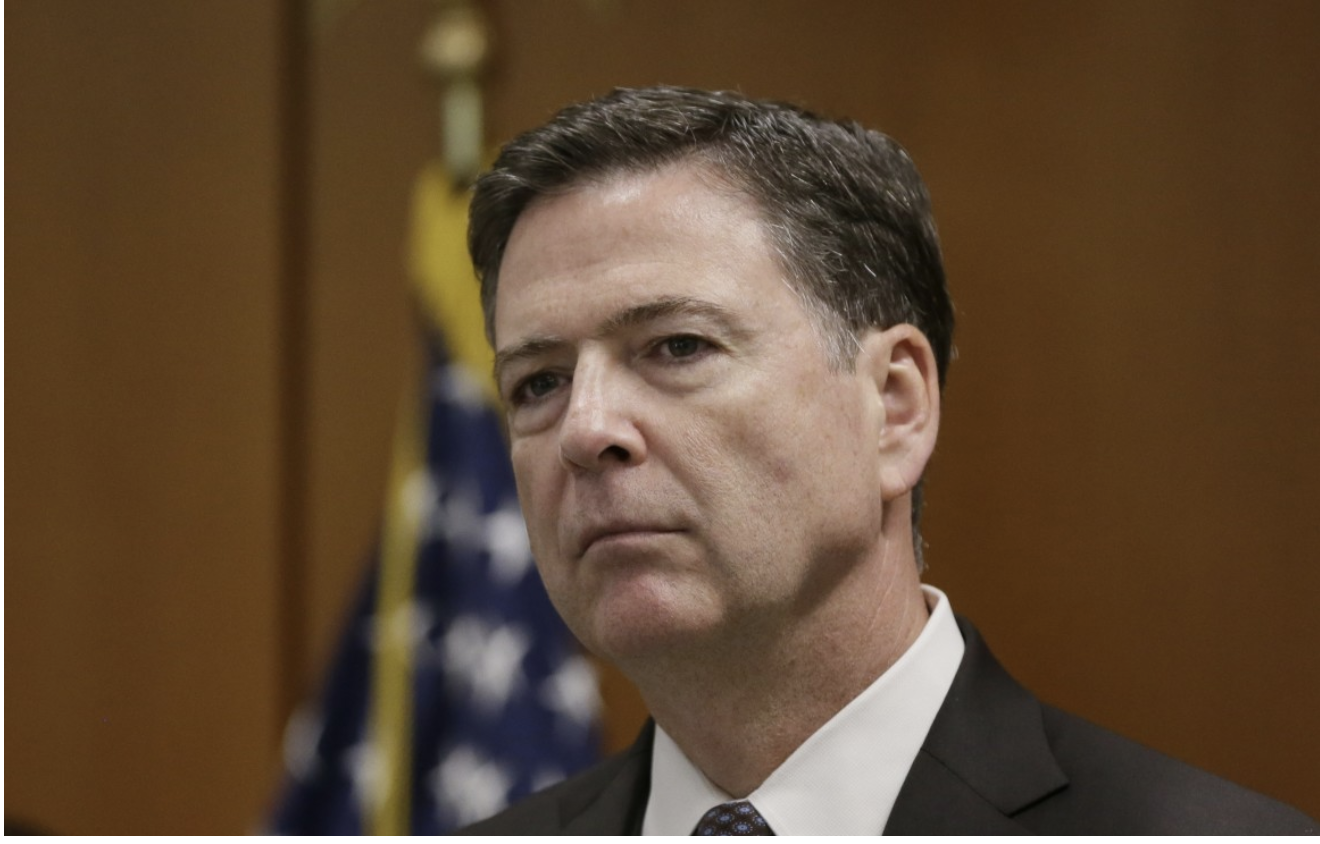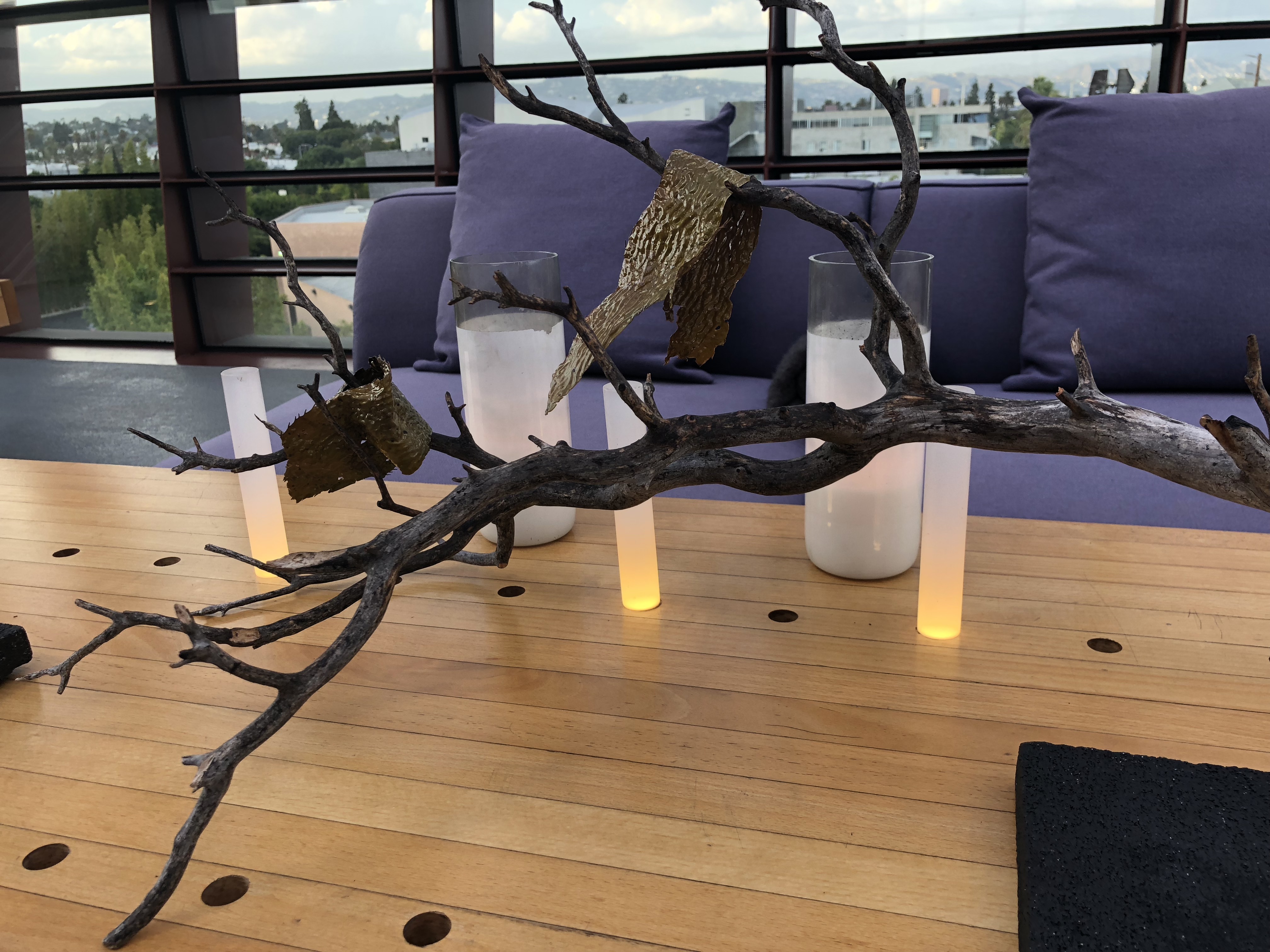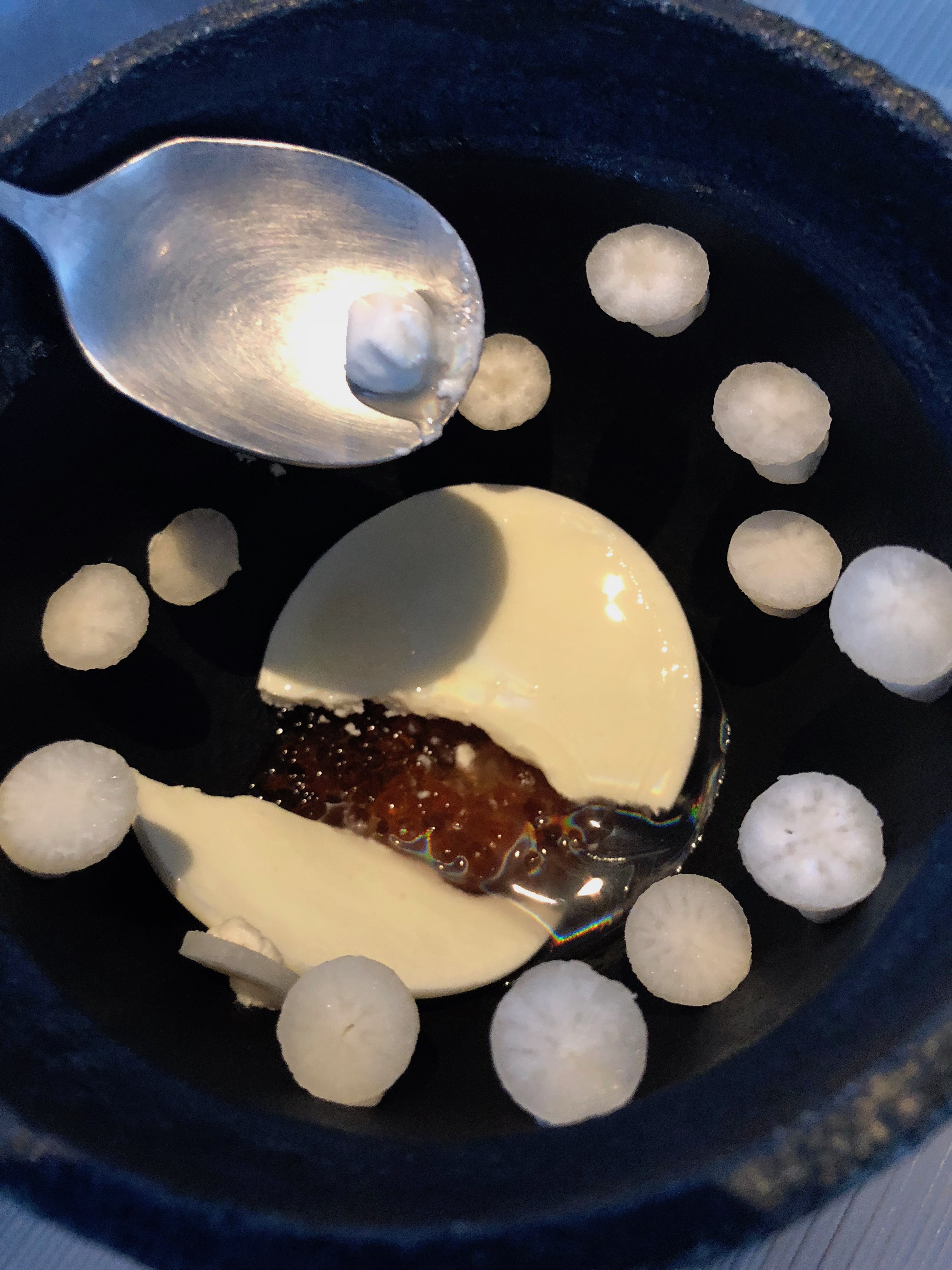Dear Inspector General Michael Horowitz:
I have written to you previously [a] [b] regarding your investigation of the actions of the FBI with respect to the search warrant obtained against Hillary Clinton on October 30, 2016. In the course of my FOIA case before the U.S. District Court of the Central District of California to remove redactions from the search warrant affidavit, I came across several issues that I believe were not fully or properly addressed in your otherwise excellent report on the matter from June of this year. I am writing you again today to share with you my observations.

The IG Report includes a full chapter on the drafting of the search warrant but unfortunately does not address the very problematic pretextual nature of the affidavit used to obtain the warrant. IG Report, pp. 379-84. You will recall that the stated purpose of the renewed investigation was to search for three months of e-mails from an earlier period that Director Comey believed might contain evidence of Clinton’s criminal intent[1] to violate the law with regard to classified information. IG Report, p. 373.[2]
However, nowhere in the search warrant application executed by the Supervisory Special Agent is the true design of the warrant – the missing three months of e-mails from early in Clinton’s tenure – disclosed. IG Report, p. 325, n. 178 (“Although Comey identified this fact as critical to his assessment of the potential significance of the emails on the Weiner laptop, the information was not included in the October search warrant application for the Weiner laptop.”). The brief probable cause portion of the search warrant affidavit is noticeably directed at something completely different, a “spill” of classified information to unauthorized devices.[3] But, as you will recall from the IG Report, the FBI had already determined that it was not interested in conducting a “spill” investigation.[4]
The IG Report is conspicuously silent on the importance of the discrepancy between the alleged purpose of the renewed investigation and the affidavit in support of the search warrant. As a result, the Report misses perhaps the most glaring problem with what transpired in the weeks before the 2016 election – the lack of probable cause for conducting the actual search authorized by Director Comey. James Comey, A Higher Loyalty, p. 193 (“They told me those might well the missing emails from the start of Clinton’s time at the Department of State. The team said there was no prospect of getting Weiner’s consent to search the rest of the laptop, given the deep legal trouble he was in. ‘We would like your permission to seek a search warrant.’ Of course, I replied quickly. Go get a warrant.”).[5]
Nearly everyone quoted in the IG Report, with the possible exception of the Supervisory Special Agent who executed the affidavit for the search warrant, stated that they did not believe the laptop would contain evidence of any criminal activity. See IG Report, pp.352-55.[6] Nevertheless, it appears that not one of the individuals dared to inform Director Comey that they lacked probable cause for the search he had authorized.[7]
Inexplicably, rather than address the lack of probable cause for the search warrant, the Report actually criticizes the FBI for not moving ahead sooner: “We found the belief that the Weiner laptop was unlikely to contain significant evidence to be an insufficient justification for neglecting to take action on the Weiner laptop immediately after September 29.” IG Report, p. 327. This makes absolutely no sense. Since when is it “unjustified” to decide not to obtain a search warrant to look for non-existent evidence that no one believes is there? The IG’s criticism of the FBI’s inaction assumes that there was probable cause for the search, but it is clear from all of the evidence that there was insufficient probable cause. In the end, the search warrant could only be obtained under the false and misleading pretext that the FBI was conducting a spill operation.
Further, the IG Report briefly describes the ultimate review of the emails on the Weiner laptop, but fails to mention that absolutely no emails were found from the early three-month time period that Comey and the others believed might be important. Compare IG Report, pp. 388-89; Comey, Higher Loyalty, p. 202 (“There were indeed thousands of new Clinton emails from the BlackBerry domain, but none from the relevant time period.”). In fact, as anyone with even a limited knowledge of the case would expect, all 13 of the classified email chains that were found on the laptop were duplicates of those already reviewed previously. IG Report, p. 389.
Perhaps the drafters of the IG Report were not technically proficient enough to ask the crucial question — when did the FBI agents and technicians reviewing the emails learn that absolutely no emails from the sought-after three-month time frame were on the laptop? No doubt that fact could have been discovered almost immediately, and if it was, then what exactly was the FBI looking for over the course of the ensuing week, while the upcoming election hung in the balance? Or were they simply stalling to cover for the fact that they had made a huge blunder? The IG Report is silent on these very significant questions.
Very truly yours,
E.
RANDOL SCHOENBERG
[1] We feel compelled to add here that no one has ever explained what exactly such a hypothetical e-mail would say, why anyone would believe that Secretary Clinton would ever draft such an e-mail, or, most importantly, why the presence of such an e-mail would help prove a violation of 18 U.S.C. § 793(e) or (f), given all of the other facts developed in this investigation (notably the absence of any transmission or delivery of classified information to unauthorized recipients or the removal of such classified information by third parties). Note that the term “mishandling” appears nowhere in the criminal statutes, and that communicating by e-mail does not “remove” anything.
[2] IG Report, p. 373. “Comey told us that the potentially great evidentiary significance of the newly discovered emails would have made it particularly misleading to stay silent. But we found that the FBI’s basis for believing, as of October 28, that the contents of the Weiner laptop would be significant to the Clinton email investigation was overestimated. Comey and others stated that they believed the Weiner laptop might contain the ‘missing three months’ of Clinton’s e-mails from the beginning of her tenure when she used a BlackBerry domain, and that these ‘golden emails’ would be particularly probative of intent, because they were close in time to when she set up her server. However, at the time of the October 28 letter, the FBI had limited information about the Blackberry data that was on the laptop. The case agent assigned to the Weiner investigation stated only that he saw at least one BlackBerry PIN message between Clinton and Abedin. As of October 28, no one with any knowledge of the Midyear investigation had viewed a single email message, and the Midyear team was uncertain they would even be able to establish sufficient probable cause to obtain a search warrant.”
[3] 26. Given the information indicating that there are thousands of Abedin’s emails located on the Subject Laptop — including emails, during and around Abedin’s tenure at the State Department, from Abedin’s @clintonemail.com account as well as a Yahoo! Account appearing to belong to Abedin — and the regular email correspondence between Abedin and Clinton, there is probable cause to believe that the Subject Laptop contains correspondence between Abedin and Clinton during their time at the State Department. Because it has been determined by relevant original classification authorities that many emails were exchanged between Abedin, using her @clintonemail.com and/or Yahoo! Accounts, and Clinton that contain classified information, there is also probable cause to believe that the correspondence between them located on the Subject Laptop contains classified information which was produced by and is owned by the U.S. Government. The Subject Laptop was never authorized for the storage or transmission of classified or national defense information.
27. A complete forensic analysis and review of the Subject Laptop will also allow the FBI to determine if there is any evidence of computer intrusions into the Subject Laptop, and to determine if classified information was accessed by unauthorized users or transferred to any other unauthorized systems.
[4] IG Report, p. 55 (“the Midyear team did not seek to obtain every device or the contents of every email account that it had reason to believe a classified email traversed.”); p. 93 (“Strzok further stated that the FBI’s ‘purpose and mission’ was not to pursue ‘spilled [classified] information to the ends of the earth’ and that the task of cleaning up classified spills by State Department employees was referred back to the State Department. He told us that the FBI’s focus was whether there was a ‘violation of federal law. Prosecutors 1 and 2 similarly told us that the Department was not conducting a spill investigation, and that the State Department was the better entity for that role. ‘At a certain point, you have to decide what’s your criminal investigation, and what is like a spill investigation…. [W]e could spend like a decade tracking emails…wherever they went.’ The SSA told us that the Midyear team engaged in several conversations, and the State Department officials expressed concern about the problem and were receptive to resolving it. Generally the witnesses told us that they could not remember anyone within the team arguing that more should have been done to obtain the senior aides’ devices.”); p. 167 (“[T]he picture that was fairly clear at that point [was] that Hillary Clinton had used a private email…to conduct her State Department business. And in the course of conduct [of] her State Department business, she discussed classified topics on eight occasions, dozens of occasions, and there was no indication that we had found that she knew that was improper, unlawful, that someone had said don’t do that, that will violate 18 U.S.C. [the federal criminal code], but that there was no evidence of intent and it’s looking, despite the fact of the prominence of it, like an unusual, but in a way fairly typical spill and that there was no fricking way that the Department of Justice in a million years was going to prosecute that.”); p. 374, n. 187 (“In his book, Comey stated, with respect to the July declination, that ‘[n]o fair-minded person with any experience in the counterespionage world (where “spills” of classified information are investigated and prosecuted) could think this was a case the career prosecutors at the Department of Justice might pursue. There was literally zero chance of that.’”).
[5] At this fateful meeting, there appears to have been absolutely no discussion of whether there was probable cause to seek a warrant. Most likely this critical omission was because, at the outset of the meeting, Andrew McCabe and his counsel Lisa Page were excluded and removed from the meeting as fall-out from an October 24, 2016 Wall Street Journal article raising spurious claims of a conflict of interest because McCabe’s wife had once run for state office and received support from the governor of Virginia Terry McAuliffe, a friend of Hillary Clinton.
[6] IG Report, p. 352-54, report of interviews with lead DOJ prosecutor David Laufman, Prosecutor 1 and Prosecutor 2:
We asked Laufman what he meant when he said there was a ‘low expectation’ that this evidence would alter the outcome of the Midyear investigation. Laufman stated:
“[W]e had seen through our investigation, the types of emails that Huma Abedin had been party to. And they were just not the kinds of emails that really went to the core issues that were under legal analysis, meaning they had to do with sort of scheduling, and…I mean, as important as she is in a personal, confidential assistant manner to the former Secretary, she wasn’t as substantively engaged in, in some matters that would have occasioned access to classified information or dealing with classified issues. So…we had seen quite a bit up to that point. And with respect to her, we hadn’t seen her engaged via email with anybody on the types of things that were material to our legal analysis. So, assuming that what was going to be reviewed from this new dataset was consistent with that, it seemed improbable to us that it was going to, to change anything. And of course as we know now, it was a giant nothing-burger.”
Prosecutor 1 stated that the notification to Congress “didn’t make any sense.” Prosecutor 1 told us that given Abedin’s role and the evidence they had previously reviewed there was little “likelihood of finding anything of import in there.” Instead of doing a public announcement, Prosecutor 1 stated, “We should just investigate it and do it as quickly as we could.” We asked Prosecutor 1 about the potential presence of BlackBerry emails from early in Clinton’s tenure.
Prosecutor 1 stated that the FBI mentioned that “there could be information that covered that BlackBerry period from the period at the front end of the tenure,” but added:
“I felt like a lot of the analysis was based upon what, what could be in there and the opportunity cost of sort of missing out on that. Of course, to me that’s a different analysis than making an announcement about it. We didn’t want to be seen to be in favor of forgoing the effort entirely.”
Prosecutor 1 stated that the FBI seemed “very concerned about transparency with the public” and “had already kind of decided what they were going to do” prior to consulting with the Department.
Prosecutor 2 told us that the Department was “shocked” that the FBI was even considering notifying Congress about this development. Prosecutor 2 said that she did not necessarily view the Weiner laptop as a significant development in the Midyear investigation. Prosecutor 2 stated:
“Because over the course of this investigation, we haven’t sought out personal devices of anybody other than Hillary Clinton. So we haven’t asked, for example, for like Huma’s personal laptops, her personal BlackBerries. We have her state.gov stuff, but that’s like, that of Huma’s is all we’ve searched.
So, there’s a threshold question in my mind of whether, like, this is even something that needs to be searched. And based on the, the iffyness on that threshold question, and then the likely significance of this device, it seems totally nuts to me that they would make an announcement having no idea what is on this device, having not looked at it. And in, and in terms of like the impact that this announcement could have.
And I remember being on the phone call like, how are you, asking like how on earth are you going to word this announcement so it’s accurate and doesn’t, doesn’t like, you know, open a much bigger can of worms than is really the significance of this recent finding. I mean at this point…we have no idea…. We just know that like some of Huma’s emails are in FBI’s custody. Like, of course Huma has other emails. Like, how is this a game changer?”
Prosecutor 2 also told us that she believed the FBI would not listen to any of the arguments they put forth. She stated, “[T]here’s a defeated feeling at this point that like [Strzok] was given the task of like pretend to DOJ that you’re hearing them out. And he was going to, you know, humor us by having this conference call, but like that nothing we said mattered on that call.”
[7] If there is one as-yet unnoticed undercurrent or subtext in all of the released information concerning the FBI’s investigation of Secretary Clinton, it is the apparent unwillingness of the male FBI leadership and agents to heed the warnings of their female colleagues, and the apparent understanding of these female colleagues that their views would not be followed by the men. See, e.g, IG Report, p. 377, (Attorney General Loretta Lynch and Deputy Attorney General Sally Yates were afraid to speak directly to Comey because he didn’t consult with them) (“We acknowledge that Comey, Lynch, and Yates faced difficult choices in late October 2016. However, we found it extraordinary that Comey assessed that it was best that the FBI Director not speak directly with the Attorney General and Deputy Attorney General about how to best navigate this most important decision and mitigate the resulting harms, and that Comey’s decision resulted in the Attorney General and Deputy Attorney General concluding that it would be counterproductive to speak directly with the FBI Director.”); IG Report, p. 340-42 (FBI Deputy Counsel Trisha Anderson and FBI Attorney 1 try unsuccessfully to remind Comey and FBI General Counsel Jim Baker that they were about to interfere in the election) (“I gather he [Baker] thought she [Anderson] might not raise it. So at our next family discussion that evening, he said let me ask you a contrarian question. You know how do you think about this? And then I think she spoke herself and said, how do you think about the fact that you might be helping elect Donald Trump? And I said, I cannot consider that at all.”) (“Baker told us that he asked Anderson if she wanted to bring this up with Comey, but Baker stated that ‘she was reticent’ to do so.”); text message from FBI attorney Lisa Page to FBI agent Peter Strzok on October 27, 2016 (FBI Attorney Lisa Page tries to remind FBI Agent Lead Peter Strzok that they cannot search the laptop without probable cause) (“completely INFURIATED [ ] with [FBI general counsel] Jim [Baker]…. Please, let’s figure out what it is we HAVE first. What if we can’t make out PC [probable cause]? Then we have no further investigate step.”).





















